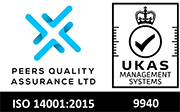Managing Risk in the User-Centred Design Process
Written by Charlie Crook, Senior UX Designer
For the uninitiated, user-centred design (or UCD) is a process of design that puts understanding users’ needs at the forefront of every stage of a project. Here at TMWX, we are big believers in this concept. In our view, keeping constant focus on the needs of users enables the creation of digital experiences that far surpass any other methodology.
In an ideal world, there would be no stone unturned to ensure we deliver a user-centric product. In reality, it’s a process with inevitable challenges. Budget constraints, tight timings, or a lack of conviction can all lead to difficulties in gathering user insights. In our experience, the best way to manage these risks is to ensure we plan for them before, during and after delivery.
With that in mind, here are a few lessons that we’ve learned along the way.
Less haste, more speed
Fundamentally, user research and user testing are at the heart of the UCD process. When navigating uncharted territory on a new project, we often see people wanting to jump prematurely into the design phase. Whatever the reasons for this, it’s fundamentally important that we establish what user insight is known, and where there are any gaps.
Time constraints or external pressure might mean you can't facilitate every step of the traditional process, so there is always a need to be flexible, but our experience has shown that a little bit of early patience will invariably pay off long run – in time, in money, and in quality too.
That’s why we’re always keen to highlight the short and long-term risks of proceeding with design too soon. In the end, testing and iteration is going to be only viable if we’re building from solid foundations.
Get to know what you already know
One question we often deal with is whether it’s better to learn the user needs and objectives upfront, or refine that iteratively with testing. Ultimately, the answer is reliant on the existing state of the project and the client. If you have a solid base of information then you may be able to set KPIs early, but for many brands it will be important to conduct user research into your market. This allows them to gain an understanding of what we need to design and build, rather than risk wasting their time completely.
To get to grips with what user knowledge already exists, it’s important to conduct a discovery workshop into the business. Not only are these sessions an opportunity to delve into the merits of existing user insights and what else might we need, but it allows us evaluate any key friction points between the project strategy, the business’ objectives and its customers’ needs.
This requires all stakeholders to come armed with their knowledge and any key pieces of evidence to support it – preferably, in-person. Face-to-face meetings tend to be more collaborative and immersive, which leads to sessions that produce richer and more thought-provoking insights. This is the quickest way to have an open and honest conversation about the current state of knowledge.
From here, we are able to digest all the valuable information and determine what existing insight is strong enough for us to use in our MVP, what existing insights might be flawed, and where there are any gaps that we might need to fill. During this ‘gap analysis’ phase, we consider which methods will be most effective in gathering further insights. This might vary from simple surveys to social listening, audience profiling or customer workshops, all of which can be provided by our Human Understanding Lab.
Be Transparent About Risk
For some projects, a few gaps in knowledge may be unavoidable. If we are forced to rely on best guesses or flawed insight, the best solution to this it to keep all of these documented in a RAID log – which the tracks the Risks, Assumption, Issues and Dependencies of any project. If we see any unexpected feedback from users, it’s easy to refer to the log to see how any potential issues may have arisen.
This is most valuable when transparent communication is kept throughout the whole process. The effectiveness depends on how consistently it’s used and updated throughout a project’s lifecycle, as well involving all stakeholders to maximise the benefit.
***
Fundamentally, our role as a digital experience agency is to steer the process to deliver the optimal outcome. The only way to truly deliver this is for our attitude and communication to meet our clients’ visions, as well as their inevitable restrictions. Ultimately, this requires a combination of principles and pragmatism. Sometimes, compromise is inevitable, but not at the expense of the overall process.


